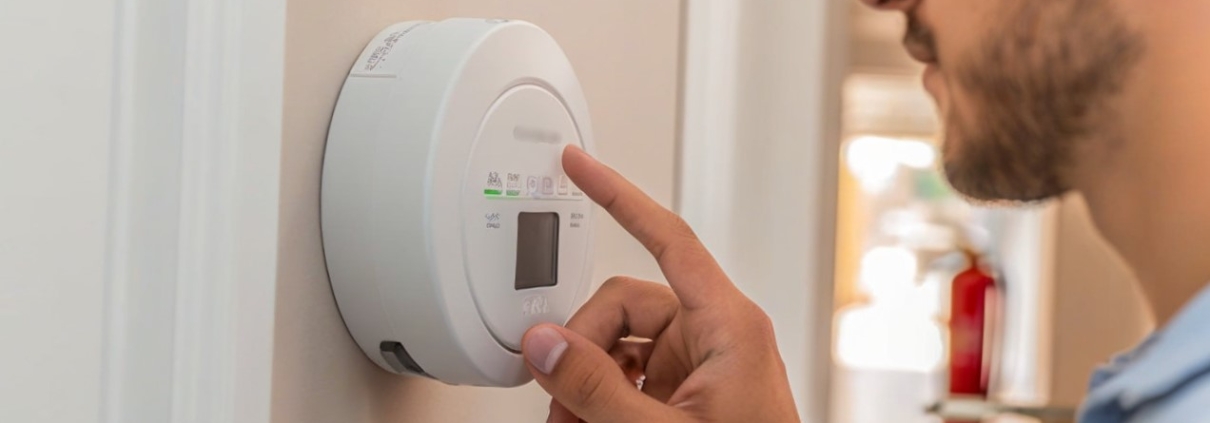Carbon Monoxide Detectors: The Overlooked Hero of Renovation Safety
When you’re planning a renovation, your mind is likely on layout changes, lighting upgrades, or finishing touches like tile and trim. But there’s one upgrade that’s quietly essential—especially in homes that rely on gas or oil heating: the carbon monoxide detector.
You might already have one tucked in a hallway somewhere. Or maybe you haven’t thought about it since move-in day. Either way, if you’re renovating, now is the perfect time to think seriously about where, how, and why you protect your home from invisible threats like carbon monoxide.
What Is Carbon Monoxide and Why Should You Care?
Carbon monoxide (CO) is a colorless, odorless gas that’s produced when fuels like gas, oil, wood, or propane burn incompletely. It can build up indoors and become dangerous—sometimes even deadly—without any warning signs.
In a place like Quebec, where winters are long and sealed-tight homes are common, the risks increase. Heating systems, fireplaces, and even attached garages can all be potential CO sources. That’s why it’s not just about having a detector—it’s about placing it properly and upgrading it when the timing is right.
Why Renovation Time Is Detector Time
There are a few moments in the life of a home when you get to rethink how everything functions. Renovation is one of those moments. You’re already rearranging spaces, updating wiring, or modifying airflow. That makes it a golden opportunity to reassess your home’s renovation safety—including your carbon monoxide detection setup.
You wouldn’t think of skipping out on smoke alarms when updating a kitchen or finishing a basement. Carbon monoxide detectors deserve the same attention, especially since many now integrate with smart systems, HVAC networks, or even mobile apps.

Key Areas to Consider During Reno
- Near Bedrooms: CO detectors should be installed outside all sleeping areas. If you’re reconfiguring bedroom layouts or adding walls, this is a must-do.
- Mechanical Rooms: Any area with a furnace, water heater, or fuel-burning appliance should have a nearby detector.
- Basements and Garages: Finishing a basement? Converting a garage? Add a CO sensor. These areas are common culprits for leaks, especially in colder climates.
- Multi-Level Coverage: Quebec building codes often recommend one detector per floor. Renovating multiple floors? Now’s the time to go all in.
Smart Home Integration for Peace of Mind
One major bonus of upgrading during a renovation? You can integrate CO detectors into your broader smart home ideas ecosystem. Many modern detectors connect via Wi-Fi or smart hubs, sending alerts straight to your phone if something’s wrong—whether you’re home or not.
Some systems also link to smoke alarms, security systems, and lighting automation, creating a full-circle safety net without extra clutter or complicated installs. Renovation is the best time to wire it right the first time.
But Wait—Don’t Go Overboard
You don’t need to turn your house into a high-tech fortress. The goal here is balance. Just like you wouldn’t install five thermostats in one room, you don’t need a detector in every corner. A well-placed, high-quality unit or two can do the job just fine for most homes.
Think of carbon monoxide detectors as part of a bigger puzzle—one that includes ventilation, appliance safety, and fire prevention. If you’re already upgrading wiring or opening up ceilings, this is your cue to make smarter, safer choices without overcomplicating the plan.
Renovation Safety in Quebec: More Than Looks
In a region like Quebec, where winter heating and closed ventilation systems are part of everyday life, carbon monoxide isn’t just a hypothetical risk. It’s real—and preventable. Whether you live in a newer build or a charming older home, upgrading your CO detectors is a simple way to make your space safer without affecting your aesthetic goals.
And with more homes embracing energy-efficient sealing and insulation, it’s more important than ever to pair those efforts with good air monitoring and emergency alert systems.
Tie It Back to the Bigger Picture
Home security isn’t just about alarms and locks. It’s about knowing your space is protected from all angles—including the ones you can’t see. A simple carbon monoxide detector could be what stands between your family and a silent threat.
So if you’re already investing time, money, and creativity into making your home look and feel better, make sure you also invest in how it protects you. It’s one of the easiest, most impactful safety upgrades you can make.

Next Steps
Curious about what else you can do while renovating? Explore home security tips or see our smart home upgrade checklist to get ideas that combine safety with simplicity.



